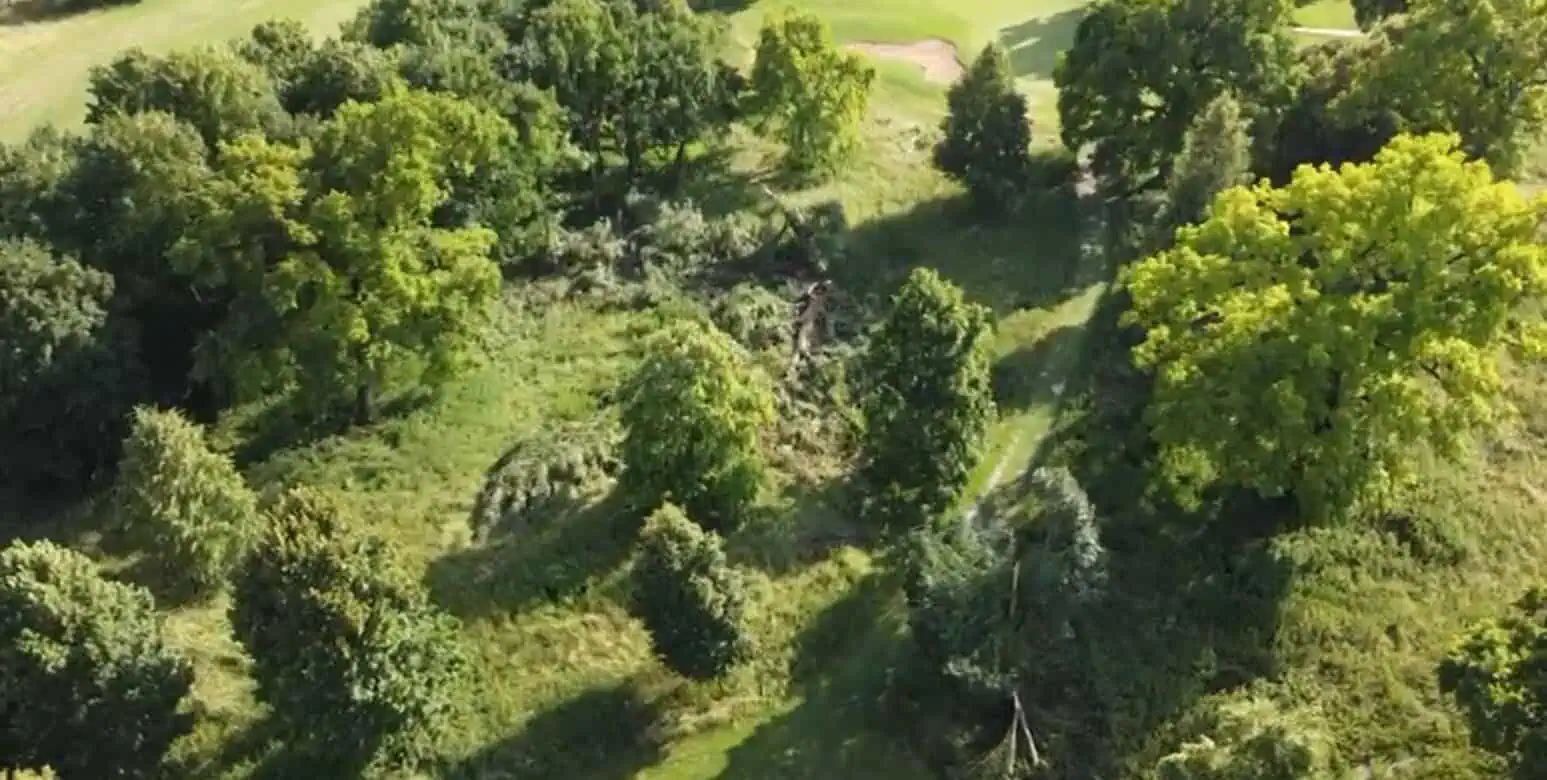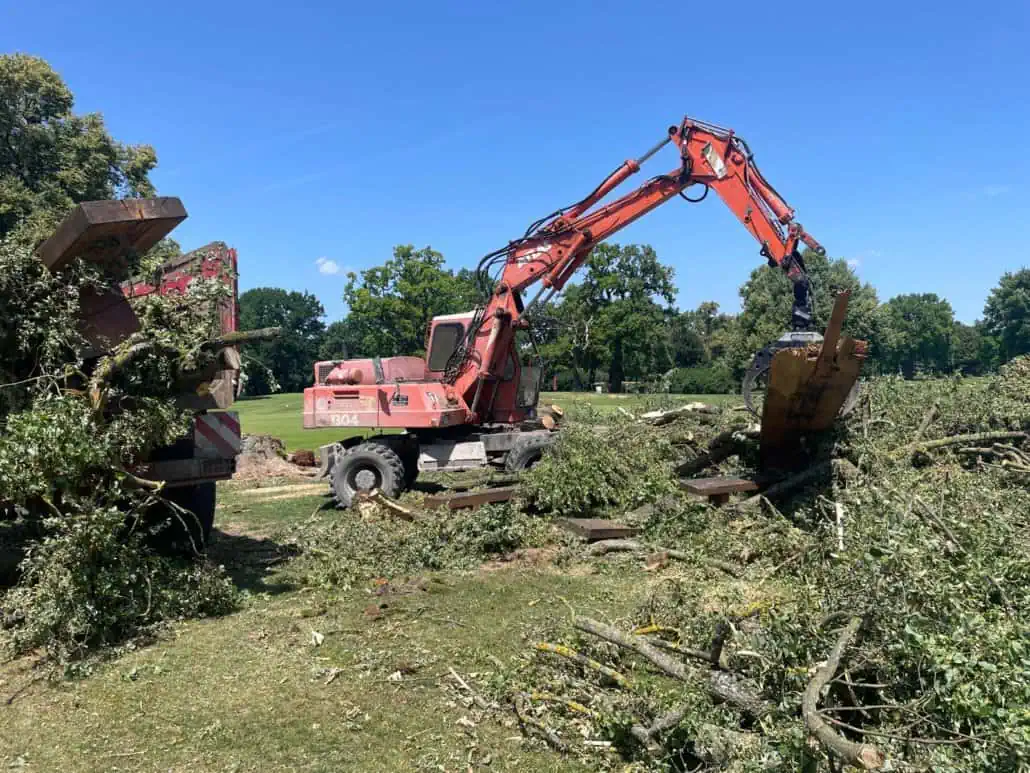How much is the lime tree that used to stand on the first tee actually worth? And all the other trees that the golf course of the German Wittelsbacher Golfclub Rohrenfeld lost in an extreme, twelve-minute storm on June 23, 2025? Korbinian Kofler, Managing Director of the course, which boasts an exceptional tree population due to its history as a former hunting ground for the Bavarian aristocracy, now asks himself this question almost every day. The storm damaged more than 80 large trees as well as numerous smaller trees, bushes and hedges. Three months after the storm, Kofler now has an overview of the damage and costs.
“350 tons of wood chips were produced during the clearing work,” sums up the managing director, who calculates the damage at around 150,000 euros, not including the purchase of new trees. “The arborists, who normally come to us twice a year, spent a week and a half inspecting the trees and then pruning or felling them. We also had five people from the machinery ring.” The golf club borrowed a tractor and trailer from the neighbouring estate.
125 members also worked from 3 p.m. every day for a week to restore the 18-hole course to a playable condition. “Fortunately, two members had a chainsaw licence and were able to help with the trees,” recalls Kofler, who is delighted with the commitment of the membership. “We wouldn’t have been able to do all the collecting of small branches, for example.”
In his experience, the damage caused by such a storm goes far beyond the visible tree damage. “The irrigation system’s controls were damaged by the overvoltage and initially failed.” After the storm, however, it became very hot, so the lack of irrigation was detrimental to the quality of the pitch. The heating control system in the guest house also broke down.
The Bavarian golf course was initially also insured against storm damage with all-risk insurance. However, Kofler also adds: “Of course, we made advance payments for all the clean-up work.” Only after documentation and assessment by the insurance company does the golf course receive x amount back.
How likely is an extreme storm like the one at Wittelsbacher Golfclub? Leading reinsurers and primary insurers such as Munich Re have been seeing rising insured losses from so-called “secondary” natural hazards for years – in Europe, these primarily include storms and thunderstorms with hail. While storm and hail were the most expensive single line of property insurance in Germany in 2023 with 2.7 billion claims in 2023, damage caused by flooding dominated in 2024.
Golf courses with trees are increasingly affected by extreme storms. The consequential damage includes clean-up work, course closures with loss of green fees, possibly dissatisfied members and the replanting of trees. Robert Paas, insurance expert for golf courses, points out in this context that it makes sense to look at the small print of an insurance policy, if the golf course has one at all. “Sometimes it says, for example, that only a sapling with a height of 1.20 meters or a trunk circumference of 80 centimetres will be replaced or that trees that are further inside a forest and not directly in view are not insured at all.” In his opinion, the probability of receiving five-figure sums for ancient large trees is in any case low.
Subscribe to our newsletter!
News & trends about sustainability in golf
The Wittelsbacher Golfclub is now planning to plant new trees on the grounds. Not an easy issue, because the new trees should also be able to withstand climate change. The groundwater in the area is also increasingly sinking. Apart from storms, droughts are also a problem. But Kofler can also see a positive aspect to the crisis: “In a way, it’s also an opportunity to improve the site both visually and strategically.”







 Foto: Tristan Jones/LET
Foto: Tristan Jones/LET Image: St. Andrews Links Trust
Image: St. Andrews Links Trust